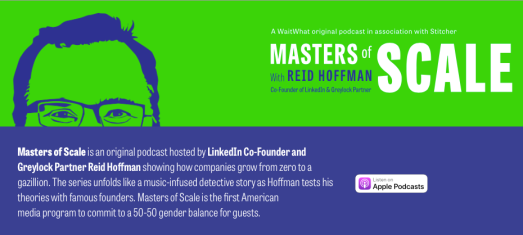Not too long ago, I published a post about time and how we use it, (Part II is here) in which I referenced three components I’ve come to see in my own life as being essential to getting the most out of my time: focus, effectiveness, and choice.
Mostly, these bits o’ wisdom have come to me the hard way: experience. I’ve made a boat load of mistakes over the course of my life, often doing things badly first, in order to ultimately learn how to do them well. I’ll offer my perspective with a personal anecdote thrown in, and I’ll include information from some older and wiser folks for anyone who may stumble upon this post. Off we go…
Focus
How distracted are you? One approach to answering this is to ask how much you accomplish over the course of a day. But, this can be a trap. “Accomplish” can conjure up images of checklists, marking off task after task so that at the end of the day you can look back and see three, four, or nine items crossed through. The trap is that it feels like something’s been accomplished, when nothing important actually has.
So, let’s re-frame the question: How much quality work do you get done each day? How much do you achieve toward what matters – toward being able to spend more quality time doing quality things?
So often this comes down to fighting distractions. Personally, throughout my life I’ve battled distraction like Leonidas battled the Persians in 300. Well, sometimes. Other times I’d actually invite it in, pour it a glass of wine, and we’d sit together for hours.
What I’ve come to understand is this: Whether I was fighting or courting distraction depended upon whether I recognized it as a distraction, or whether I thought I was actually working on something important.
Michael Hyatt addresses getting work done in a way that seems incredibly simple, but is actually quite profound and necessary. He schedules time to actually do work.
There are a whole host of obvious distractions to avoid while working on important things. You know, text messages, news feeds, phone calls, Spider Solitaire. But, there are also the sneaky distractions masquerading as real work. This is something Jason Fried digs into in this awesome TED talk. These are things like work-related email notifications popping in every few minutes, employee/co-worker visits, meetings, and so forth.
But for me, there were times when I thought I’d recognized and eliminated distractions, I’d identified important work, and I even felt focused, but I just wasn’t getting as much quality work done as I wanted to be, and knew I was capable of, doing.
This was when I had to learn how to focus more effectively. That “how” was elusive and seemingly counter-intuitive, but has been so critical.
The How
Single-tasking is, you guessed it, the opposite of multi-tasking. If you get paid to chew gum for a living, multi-tasking while you work is a fine option. However, if your role involves even a modicum of brain function, you need to have blocks of undistracted time to devote intellectual and creative energy to it.
This means freedom from the obvious distractions mentioned above. It also means freedom from our own self-imposed distractions of thinking about other things we have to do, even other work-related things. I’ve had to give myself permission to just dig deeply into one, single, solitary important thing at a time. And focus!

Anyone who has to manage multiple projects at a time, or who wears multiple hats and must compartmentalize responsibilities should understand and practice this. Being an entrepreneur or business owner does not somehow make us able to use our brains differently. Trying to multi-task is simply a recipe for anxiety and stress.
Anecdote
I learned this lesson early in my career while working with a great guy who managed our company’s sales team. He was as nice as can be, super high energy, and talked at a breakneck pace. We were a fully distributed team and whenever I would jump on the phone with him, I’d hear him typing away as I spoke to him. He would jovially boast, “I’m just multi-tasking!” And, everyone always talked about the volume of sales he produced.
One day, I got the call that he was abruptly no longer a part of the team, and our CEO asked me to temporarily assume his role. Of course, I agreed, but I was scared to death. “How can I possibly produce the way he does?” I thought.
Upon diving into account details, email history, and doing some good old fashioned statistical analysis, a pattern began to emerge. Rushed communication, underdeveloped clients, and poor attention to detail characterized his work. Ill-conceived campaigns with mediocre results were common. The speed and multi-tasking had taken its toll. Sales volume was high, but sales quality was decidedly low. More importantly, customers weren’t being served well, which meant return customers were very low as well.
Some clients he’d taken on should’ve been turned away for a variety of reasons, and others had been dropped into a particular campaign cycle that didn’t fit. Sometimes creative details had been overlooked. But most importantly, I found email threads that were sometimes 10 or 20 emails long that could have been accomplished in just a few emails had a bit more thought been put into the original. Client’s noticed, too, and were frustrated by it.
So, we developed a system for communicating with clients, worked on more effectively assessing prospective client needs, and on developing campaign strategy. Over the course of the next 12 months, this helped triple gross monthly sales across the team, primarily through more effective and efficient communication which created more time to focus on creative development, A/B testing, and so forth.
Unconventional Wisdom
The idea of slowing down, being thoughtful and meticulous, and even walling oneself off from the world for blocks of time in order to focus seems to go against the grain in many companies. Everyone needs to “be available” for urgent matters. Poppycock.
Single-tasking works. We’re not computers, and we weren’t meant to do more than one thing at once. Our ability to singularly focus drastically changes the quality of work we can accomplish, which should be what it’s all about: doing the best work possible.
“You’re not actually doing four or five things at once, because the brain doesn’t work that way.” Instead, “you’re rapidly shifting from one thing to the next, depleting neural resources as you go.” (from the NPR article above)
Paul Graham’s essay on what he calls the maker’s schedule and the manager’s schedule addresses this in interesting fashion. To summarize, he makes the case that while managers’ days are broken into the typical Outlook calendar increments, those who make things (programmers and writers are his examples) need large blocks of uninterrupted time in order to create.
Here’s an interesting quote for the managers of makers to consider:
Each type of schedule works fine by itself. Problems arise when they meet. Since most powerful people operate on the manager’s schedule, they’re in a position to make everyone resonate at their frequency if they want to. But the smarter ones restrain themselves, if they know that some of the people working for them need long chunks of time to work in.
Be Makers of Time
The vast majority of us are makers in our work roles. And when we do our best work, not only do we fulfill ourselves and those whom we serve, we actually create time for what’s important by reducing wasted hours.
When we single-task, we allow our brains to function optimally which creates higher quality time later to devote to what should matter most in our lives: family, friends, volunteer work, hobbies, and so forth. We’re not leaving our work day and going into these activities depleted of energy and brain power, incapable of being intellectually and emotionally present for them.
We should all strive to be makers of time in this sense.
Yes, I mean in the metaphorical sense. Unless you’re God – which, of course, you’re not. Or Aaron. You know, Shane Carruth’s character from Primer? But, he was really just screwing with time, not actually creating it. Never mind.
At some point, I’ll get around to effectiveness and choice. Until then, remember this: multi-tasking is a fool’s errand.
Fin.














